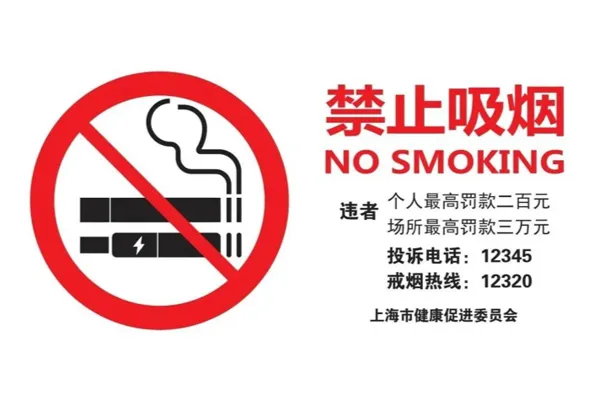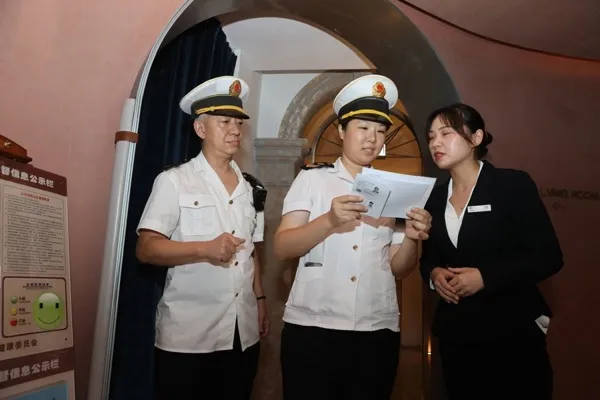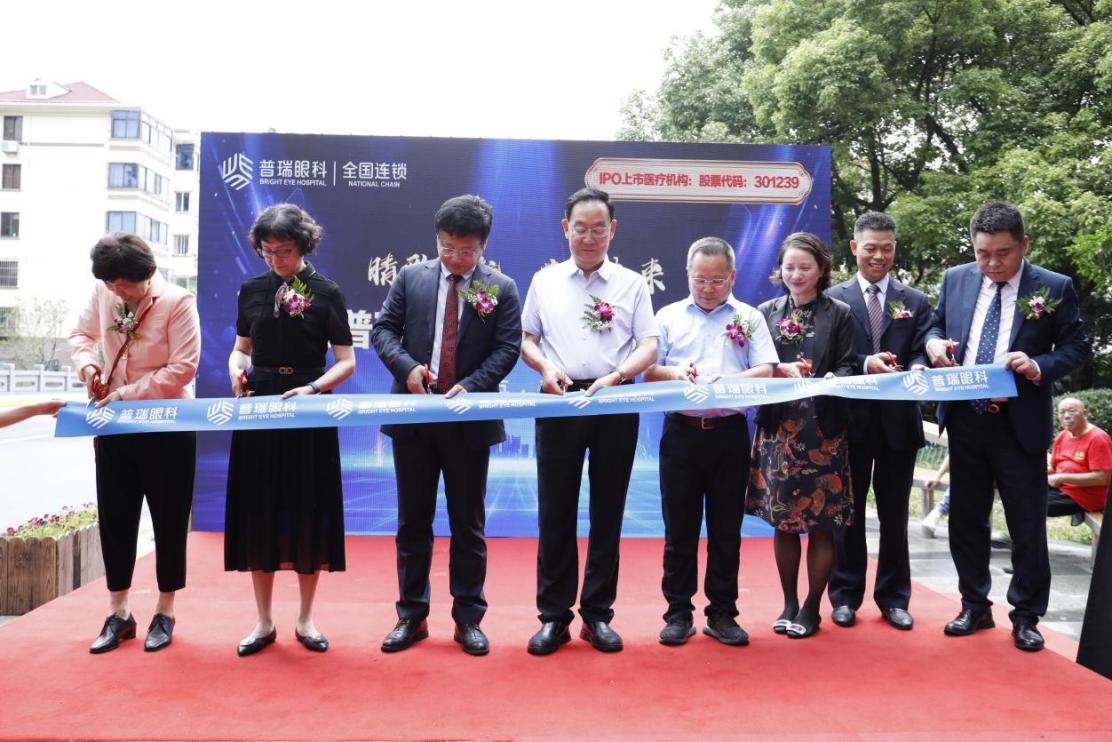Let the loving blood in the Yangtze River Delta region be truly homogeneous: Shanghai took the lead in establishing the "Four Unifications" joint internal audit mechanism
During the "May Day Holiday" in 2024, many scenic spots such as People's Square and the Oriental Pearl Tower welcomed a special group of tourists - while enjoying the beautiful scenery of Shanghai, they rolled up their sleeves and left their passion and love in the city. On May 1st alone, about 1,300 blood samples were collected, an increase of 20% from usual times.
For a long time, Shanghai's medical level has been at the forefront of the country. It is a typical medical import city. The precious blood collected from mobile vehicles and blood donation houses eventually flows into patients. However, citizens often encounter such situations: their blood donation is "rejected" and they are told "unqualified" after blood collection. To this end, at the end of 2020, the blood management agencies of Jiangsu, Zhejiang, Shanghai, and Anhui jointly signed the "Yangtze River Delta Regional Blood Management Collaborative Development Cooperation Agreement." According to the agreement, the Shanghai Blood Center will take the lead and join forces with blood stations in four places to focus on the "four unifications" of "unified review guidelines", "unified teacher training", "unified review methods" and "unified result determination". The station system has established a joint internal audit mechanism for regional blood stations.
"From one blood vessel to another, blood requires a series of strict tests." As Zhang Xi, director of the Shanghai Blood Center, said, ensuring the supply and safety of clinical blood for the people is a silent guard for the city's lifeline.
It is reported that Shanghai needs 1,500 bags of blood and 200 therapeutic units of platelets every day to meet clinical needs, and clinical blood use is in a "tight balance" state. These life-saving blood cannot be artificially regenerated and can only come from voluntary donations from caring people. "What we usually call 'safety' refers to protecting blood donors first, and then protecting blood users." Lin Junjie, Party Secretary of Shanghai Blood Center, explained that in addition to the spread of infectious diseases that are of greatest concern to the public, all tests will be carried out within half a month. Women who have undergone tooth extraction or minor surgery should not donate blood 3 days before and after their menstrual period. "
However, not all citizens are well versed in relevant knowledge. It has become a heavy responsibility for blood centers and blood stations to monitor the source of a drop of blood's "journey". "Since the release of the national strategy for the high-quality development of the integration of the Yangtze River Delta, there have been more and more opportunities for interconnection. As a livelihood plan, when seeking medical treatment across provinces, blood is inevitably involved." In the past, due to different management systems and monitoring standards, various Blood stations and blood centers in various regions at the level of "individual operations". In order to better coordinate the homogeneous union in the Yangtze River Delta region, in the cooperation launched in December 2020, the "Yangtze River Delta Regional Blood Center Joint Internal Audit Implementation Plan" is the first joint internal audit of regional blood stations established in the national blood station system. mechanism. The leaders and department heads of Jiangsu, Zhejiang, Shanghai, and Anhui blood centers formed the project leading group and working group respectively. The leader of Shanghai Blood Center served as the leader of the project leading group.
The first step in joint internal audit is to have unified personnel. To this end, a joint internal auditor pool was established on the basis of formulating the "Internal Auditor Selection Guidelines" based on the principle of "unified teacher training". Starting from 2021, the project team will hold a total of 3 "Blood Station Internal Auditor Training Courses". Members of the joint internal auditor pool must participate in the training and pass the assessment. More than 800 colleagues from blood stations across the country participated. According to the principle of survival of the fittest, as of the end of 2023, the joint internal auditor database has a total of 124 internal auditors from 46 units.
At the Shanghai Blood Center, the reporter saw a thick and detailed checklist. Under the guidance of the principles of "unified audit criteria", "unified audit methods" and "unified result determination", the Yangtze River Delta Regional Blood Station Joint Internal Audit Checklist was released. This document is based on the Blood Station and Blood Station Laboratory Supervision Form issued by the National Health Commission, and adds the latest version of specifications and industry standard requirements, including a total of 19 chapters and 261 audit items. At the same time, the project team regularly collects and revise the opinions of each blood station participating in the internal audit every year to ensure the suitability and effectiveness of the checklist.
What does the checklist involve? Blood collection, preparation, laboratory, storage, transportation...everything is done. Qiu Yingjie, deputy director of the Quality and Regulation Department of the center, said that taking the blood collection process that is more familiar to the public as an example, arm disinfection, environmental disinfection, blood donor blood assessment, etc. are all involved. "Before donating blood, in addition to asking and filling out the informed consent form, there will also be a fingerstick blood collection preliminary screening process that can issue results in three to five minutes. This involves hemoglobin measurement, alanine aminotransferase, hepatitis B Surface antigen rapid testing and ABO blood type testing. "Among them, hemoglobin indicators are related to anemia, and alanine aminotransferase indicates the potential for hepatitis. The influencing factors include alcohol consumption, fatigue, and high-fat diet.
When precious blood is concentrated in preparation, storage and other processes, quantitative indicators become more complicated. "Taking the most basic blood storage temperature as an example, apheresis platelets should be stored at 20°C to 24°C; whole blood, suspended red blood cells, and washed red blood cells should be stored at 2°C to 6°C; fresh frozen plasma, frozen plasma, and cryoprecipitate coagulated blood Factors should be stored at minus 18°C; frozen red blood cells must be stored at the lowest temperature, which must be below minus 65°C.”
From output to input, it is as meticulous as the internal audit process. In 2023, the scope of participating in the Yangtze River Delta joint internal audit was expanded to 5 blood centers and 9 blood stations, and 49 joint internal auditors issued a total of 80 unqualified items. This year, all blood stations in the Yangtze River Delta region have actively requested to participate in the joint internal audit. In order to ensure its efficient and sustainable advancement, a joint internal audit rotation participation mechanism will be established, that is, on the premise of 15 participating units each year, different blood stations Get involved and get regular full coverage. At the same time, led by the Shanghai Blood Center, the "Yangtze River Delta Regional Blood Indicator Monitoring Project" was added last year for comparison, with a total of 7 overall indicators and 13 process indicators, including the number of blood collections, the proportion of regular blood donors, and reports of adverse reactions to blood donation. rate, indoor quality control out-of-control rate, etc., to continuously improve blood safety and quality.
"Just like milk needs to be tested for its nutritional content, the effectiveness of blood is also the key to quality control. If any test result fails during the monthly sample inspection, the bag of blood must be scrapped and destroyed in accordance with relevant national regulations." Chief of the Center's Quality Assurance Section Zhang Lanjun said frankly that the biggest "non-understanding" of some citizens about free blood donation is why blood donation is free and blood is charged. In fact, the fee paid for blood is not the "blood" itself, but the detection, preparation, storage and transportation of the entire process. etc., and finally form different blood products, which can safely and fully flow into the bodies of patients with different indications.
Today, as the integration of the Yangtze River Delta continues to advance, blood management cooperation is also deepening. In addition to daily medical needs, the Shanghai Blood Center predicts the blood inventory in advance, dynamically adjusts and timely activates the Yangtze River Delta blood allocation mechanism, effectively ensuring the success of major conferences and events such as the China International Import Expo and the 19th Asian Games in Hangzhou. hold. From January to May this year, seven central blood stations in the Yangtze River Delta region allocated a total of nearly 20,000 units of blood to the Shanghai Blood Center.
Today, this domestically pioneered regional joint internal audit model has formed a sustainable brand project. At the same time, through joint internal audit projects, the four places have also continued to promote the development of other cooperation projects - as of December 2023, the "Yangtze River Delta Regional Rare Blood Type Database" project has registered 774 donors; the "Yangtze River Delta Regional Blood Allocation" project Mechanism" project, a total of 260,000 blood components of various types were transferred to Shanghai and 1,619 people were transferred out; the "Inter-provincial Reimbursement Mechanism for Clinical Blood Costs of Blood Donors in the Yangtze River Delta Region" project directly exempted 63 cases and reimbursed blood costs 56,000 yuan; the project of “shielding frequent cross-provincial blood donations during the blood donation interval” and “preventing HIV-positive blood donors from cross-province donation” project polled a total of 490,000 people and screened 2,849 high-risk blood donors. In accordance with the relevant regulations on blood management in the Yangtze River Delta region, the blood transfusion fees of unpaid blood donors reimbursed across provinces can be reimbursed across provinces in other places, and blood donors can choose to be reimbursed on-site or reimbursed by mail. Mr. Zhu participated in voluntary blood donation in Shanghai and donated a total of 1,200 ml. Recently, he underwent blood transfusion treatment during an operation in Yancheng City, Jiangsu Province. His wife applied for reimbursement from another place on his behalf and successfully reimbursed more than 5,000 yuan.
"We hope to continue to summarize relevant experience and form a replicable quality management model, which will play a leading role in the domestic blood station system, reduce the frequency of common problems, and continuously optimize various indicators." Lin Junjie said that in terms of resource sharing and collaboration, Under the principle of win-win, the Shanghai Blood Center will continue to take the lead in the joint internal audit project of the Yangtze River Delta blood stations, promote the homogeneous development of regional blood quality management, and ensure the supply and safety of clinical blood for the people.





